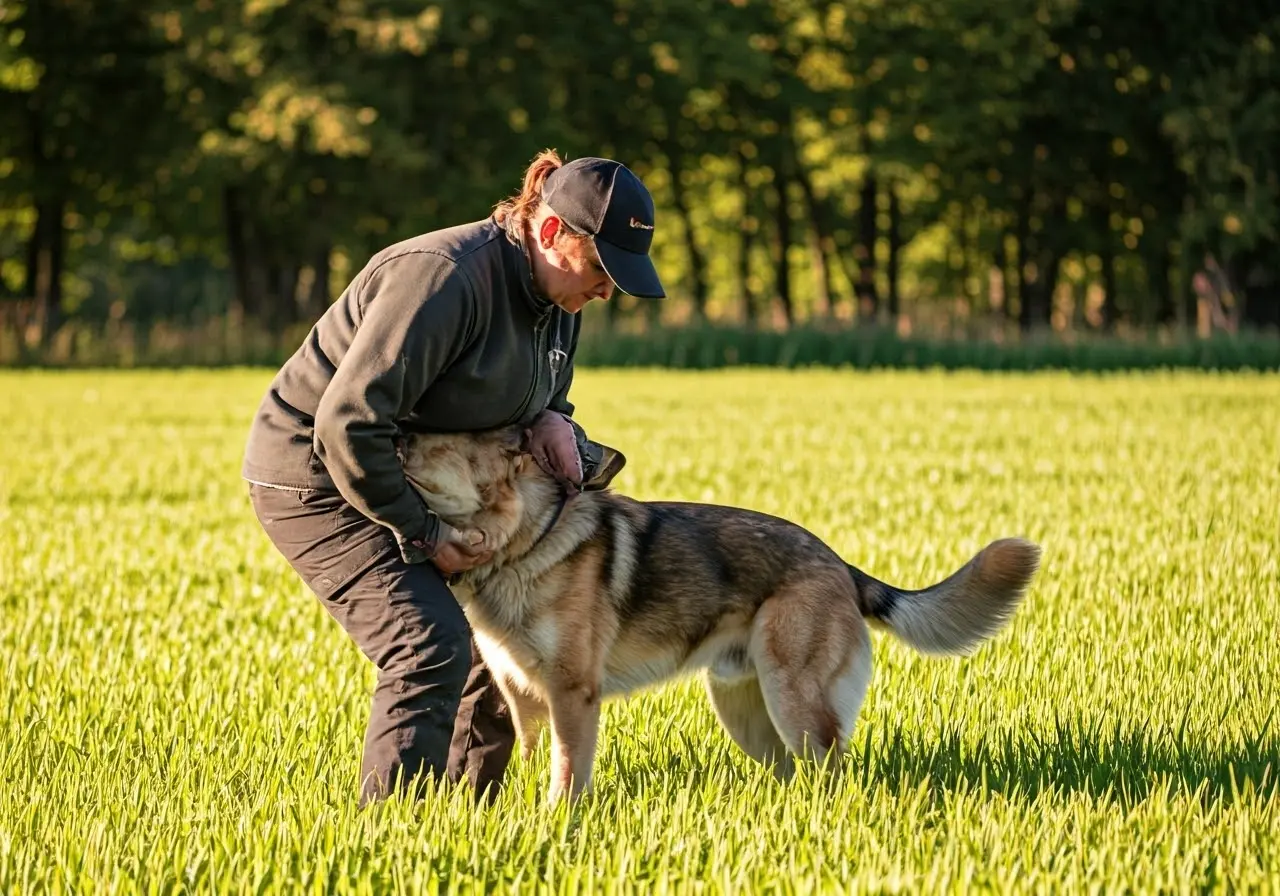Understanding and addressing behavioral issues in dogs can be a challenging task for many pet owners. Private dog training is often suggested as a potential solution. This FAQ blog will explore whether private dog training can effectively address these issues, detailing how it works and what you can expect.
What is Private Dog Training?
Private dog training involves one-on-one sessions between the dog, owner, and a professional trainer. These sessions are tailored to address the specific needs and behavioral issues of the dog.
During these personalized sessions, trainers often visit your home to observe your dog’s behavior in its natural environment. This setting allows the trainer to identify triggers and create strategies suited to your dog’s unique circumstances.
Private training emphasizes a hands-on approach where dog owners actively participate. This engagement helps ensure that the training methods and commands are understood and consistently applied at home.
Common Behavioral Issues Addressed
Private dog training can address a range of behavioral issues such as aggression, anxiety, excessive barking, and leash pulling. Each plan is customized to target the problem behaviors specific to your dog.
Aggression towards people or other animals is one of the most challenging behaviors that private training can help manage. By understanding the root cause and applying positive reinforcement techniques, trainers work to reduce aggression and promote calm behavior.
Anxiety, whether due to separation from their owner or unfamiliar environments, can also be effectively handled through private training. Trainers teach dogs coping mechanisms and help create a more secure, balanced mental state.
How Does Private Dog Training Work?
A professional trainer will assess your dog’s behavior, identify the root causes of issues, and create a customized training plan. Sessions typically involve teaching the owner techniques to continue the training at home.
Training usually begins with an in-depth assessment to understand the dog’s specific issues and their environment. The trainer gathers information on the dog’s daily routine, triggers, and history to design an effective training plan.
Consistency is key in private dog training. The trainer not only works with the dog during each session but also educates the owner on maintaining the training regimen. This collaborative approach ensures that the dog continues to improve even outside of formal sessions.
Benefits of Private Dog Training
The personalized attention your dog receives ensures that training is effective and focused on their specific needs. Additionally, it provides flexibility in scheduling and a quieter, less distracting environment.
One of the primary benefits is the ability to address behavior in the dog’s everyday environment. This real-world training helps dogs learn more effectively and adapt better to their surroundings.
Private training also allows for a bespoke approach, ensuring that the techniques used are the most suitable for your dog’s temperament and specific behavioral issues. This customization often leads to quicker and more lasting results.
For dog owners, the convenience of having a trainer come to your home can be a huge advantage. It eliminates the hassle of travel and provides a comfortable setting for both the dog and the owner.
What to Expect During Training
Training sessions usually last an hour and can be held at your home or at the trainer’s facility. Expect hands-on practice, homework assignments, and follow-up sessions to track progress and adjust techniques as needed.
Each session is typically divided into phases: assessment, active training, and review. During the assessment, the trainer observes and interacts with the dog to identify behavior issues. Active training involves implementing strategies and practicing commands.
Homework assignments are a standard part of private dog training. These, often including exercises and commands to practice, maintain the training momentum between sessions and help reinforce the dog’s learning.
Follow-up sessions are crucial as they allow the trainer to monitor progress, address any new issues, and adjust the training plan as necessary. This ongoing support helps ensure sustained improvement in your dog’s behavior.
Choosing the Right Trainer
It’s important to choose a trainer who is certified and has experience with the specific behavioral issues your dog is facing. Ask for recommendations, check reviews, and have an initial consultation to see if they’re the right fit.
Look for trainers who use positive reinforcement techniques and have a strong background in animal behavior. Certification from reputable organizations indicates a level of professionalism and expertise.
Check for testimonials or reviews from past clients to gauge the effectiveness and reliability of the trainer. Personal recommendations from friends or your veterinarian can also be invaluable.
An initial consultation can provide insight into the trainer’s methods and compatibility with your dog. During this meeting, discuss your dog’s issues, training goals, and get a sense of the trainer’s approach.
Final Thoughts
In conclusion, private dog training can be a highly effective method for addressing a variety of behavioral issues in dogs. By offering personalized attention and a tailored training approach, it can help set the foundation for positive behavioral changes. While it requires commitment and consistency, the outcomes can lead to a happier and better-behaved pet.


